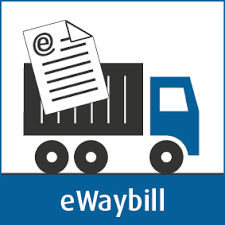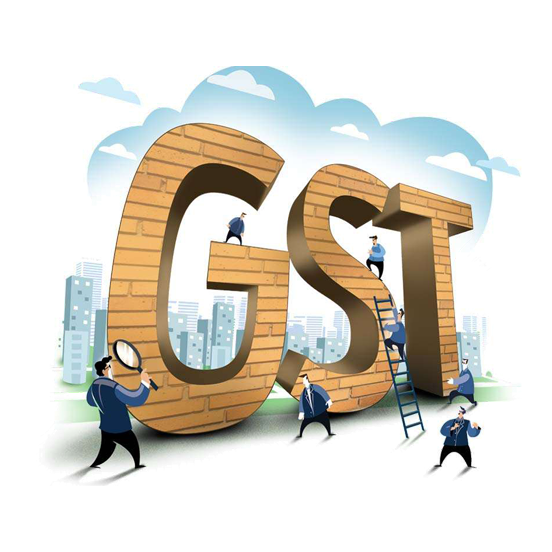- Business Startup
- Startup-Indian Entities
- Startup-Foreign Entities
- Business/Entity Conversion
- Business Registration
- Tax & ROC
- Yearly Tax Compliances
- Income Tax Return Filing
- ITR for Salaried Individuals/ Pensioner
- ITR for Capital Gain
- ITR for Companies
- ITR for House Property Income
- ITR for Income from Business
- ITR for Individuals having Share Trading
- ITR for NRIs and Resident with Foreign Income
- ITR for Partnership Firm/AOP/BOI
- ITR for Presumptive Income
- ITR for Speculation Business
- ITR for Trust, NGO and Companies
- Advisory on Tax Savings
- TDS Return Filings
- LTCG Filing and Advisory
- Income tax Notice Compliance
- Basic
- Standard
- Premium
- ITR for House Property Income and Other Source Income
- ITR for Capital Gain
- ITR for NRIs and Resident with Foreign Income
- ITR for Individuals having Share Trading or Casual Income
- ITR for Speculation Business
- ITR for Income from Business and Profession
- ITR for Presumptive Income
- ITR for Partnership Firm/AOP/BOI
- ITR for Companies
- ITR for Trust, NGO
- Advisory on Tax Savings
Yearly Tax Compliances
ITR for Salaried Individuals/ Pensioner
Income Tax Return Filing
- GST
- GST Registration (₹799)
- GST Accounting
- GST Return Filing
- GST Annual Return
- GST LUT Submission
- GST Taxpayer Registration
- GST Registration for Foreign Entity
- GST Registration Cancellation
- GST-Revocation of Cancellation
- GST Return Filing Packages
- E-way Bill Submission
- Ask an Expert-GST
GST Registration & Cancellation
- IPR
- Trademark
- Trademark Registration (₹5799)*
- Trademark (Individual) Registration
- Trademark with Logo Designers (Individual)
- Trademark with Logo Designers (Company)
- Trademark Objection Management
- Trademark Renewal
- Trademark Renewal (Company)
- MSME Compliance Trademark Registration
- Trademark Restoration
- Trademark Assignment
- Trademark Hearing
- Trademark Opposition
- Trademark Infringement
- Trademark Investigation
- Trademark Logo
- Copyright
- Copyright Registration
- Copyright Objection
- Computer Software Copyright
- Logo Copyright for Goods
- Songs Copyright
- Sound Recording Copyright
- Logo Copyright for Service
- Artistic Work/Painting Copyright
- Cinematography Copyright
- Copyright a Book
- Literature/Dramatic Copyright
- Music Notation Copyright
- Phrase/Slogan Copyright
- Symbol Copyright
- Patent
- Design
Trademark
- Trademark
- Compliance
- LLP Annual Compliance
- Winding up of Inactive LLP
- LLP Winding up by NCLT
Initial Compliance
General LLP Compliance
Changes in company
LLP Annual Compliance/ Closure
- Pay Roll
- Company
- Blog
Goods and Service Tax
GSTR 9A and 9C Filing (Basic)
GSTR 9A and 9C Filing (Basic)
- Overview
- Points to remember
- Process
GSTR-9A & 9C – GST Annual Report (Basic)
GST registered taxpayers who have opted for the Composition Scheme under Goods and Services Tax (GST) are required to file GSTR-9A. GSTR-9A is a type of GST Annual Return that is expected to be filed once in a particular financial year. GSTR-9A includes all the information, submitted by the composition taxpayers, furnished in the quarterly return during a specific fiscal year. In this article, we look at the various aspects of GST annual return or GSTR-9A in detail.
Eligibility
Every taxpayer registered under the composition levy scheme under GST must file GSTR-9A. However, the following indivduals are not required to file GSTR-9A:
- Input Service Distributor
- Non-Resident Taxable Individuals
- Individuals who pay Tax Deducted at Source (TDS) under Section 51 of the Income Tax Act.
- Casual Taxable Individuals
- E-Commerce operators who pay Tax Collected at Source (TCS) under Section 52 of the Income Tax Act.
Due Date for Filing GSTR-9A
The usual due date for filing GSTR-9A is on or before the 31st of December that follows the close of a certain financial year. For instance, assume a composition taxpayer is to file GSTR-RA for the FY 2017-2018. The taxpayer is required to file GSTR-9A on or before the 31st of December of the year 2018.
However, as per the latest press release, on the 7th of December, 2018, the Central Board of Indirect Taxes and Customs has extended the due date for filing GSTR-9A to 31st of March, 2019.
Details for Filing GSTR-9A
While filing GSTR-9A, the taxpayer would be required to furnish the following information:
Part-I of GSTR-9A
Basic details such as the GSTIN, Trade Name and Legal Name of the taxpayer would be auto-populated on the GST Portal.
Part-II of GSTR-9A
Information on the outward and inward supplies that are declared in GSTR-4 that was filed during the financial year. This would comprise of the summary from all the quarterly returns filed during the fiscal year.
Part-III of GSTR-9A
Information of the tax paid as declared in the returns filed during the certain financial year. Taxes paid under different heads such as the IGST, SGST, CGST, Cess, Interest, Penalty and Late Fee has to be mentioned here.
Part-IV of GSTR-9A
Some specifics on particular transactions for the previous fiscal year that were declared in the returns of April to September of the current FY or up to the date of filing of annual return, whichever may be earlier. This section would comprise of the summary of the corrections or amendments concerning to the entries of previous FY. It may be omissions or additions.
Part-V of GSTR-9A
Various information such as the following:
- Specifics of Demands and Refunds. Here, the details of any other demands from the tax department regarding tax, tax paid on a demand raised, any balance to be paid should be mentioned. Similarly, all the details of the Refunds claimed, refunds received out of a claim or any pending refund shall be mentioned.
- The details of credit reversed or availed. If a taxpayer switches from a regular to a composition scheme or vice versa, ITC should be reversed or added accordingly. Such details concerning to ITC should be entered here.
- Any Delay fee payable and paid. Any late fee on the account of delayed payments of tax or late filing of returns should be mentioned in this section.
Penalty
The penalty for delayed filing of GSTR-9A will incur charges based on the delay as follows:
- Under Central Goods and Services Tax: INR 100 per day of default.
- Under State Goods and Services Tax: INR 100 per day of default.
Hence, the total penalty for late filing of GSTR-9A return will be Rs. 200 per day of default. However, the maximum delay fee per day cannot exceed more that 0.25 per cent of the turnover in the State or the Union Territory under CGST/ SGST/ UTGST
GSTR-9C
Form GSTR 9C is meant for filing the reconciliation statement of taxpayers pertaining to a particular financial year. The form is a statement of reconciliation between the Annual Returns in GSTR-9 and the figures mentioned in the Audited Financial Statements of the taxpayer. Given that, this CA certified form must be filed during the filing of Annual Returns in GSTR-9 and the Audited Financial Statements. The obligation can either be completed through the GST portal or a Facilitation Centre. This article deals with the usage and need of the form.
What is a Reconciliation Statement?
A reconciliation statement is a document which is intended to facilitate independent verification of the accuracy of the balance in the accounts of a company, added with the purpose of clarifying the differences between the two versions of the account. Under GST, the Chartered Accountant or Cost Accountant is required to formulate the GST reconciliation statement, wherein any differences between the details reported in the GST returns and the Audited Accounts must be reported along with the cause of such deduction. Such an obligation is enforced to certify any additional liability resulting out of the reconciliation exercise and GST audit in GSTR-9C.
The Purpose of GST Reconciliation
Reciliation under GST is a given, which can be attributed to the following factors:
- Taxpayers part of this tax system will only be able to claim Input Tax Credit (ITC) if their invoice is present as a part of their 2A data or vendor data. Considering this, the taxpayers are necessitated to perform a reconciliation on the areas where there is a mismatch between the ITC and 2A data.
- Taxpayers must perform reconciliation to ensure the correctness of the declaration made in the form of monthly and quarterly returns and to avoid duplications.
Apart from this, the provision caters to the following circumstances:
- Claiming the eligible ITC against any invoice raised during the previous year.
- Apportionment of ITC associated with the previous year.
- Declaration of CDN’s issued against any invoices raised during the previous year.
- Filing of amendments to the information furnished in the returns filed during the previous year.
- Making amendments to the information reported in the GST returns for taxpayers who have opted for the composition scheme.
Applicability
GSTR 9C is applicable to taxpayers who are required to obtain an annual GST audit of their accounts. It must be prepared and certified by a Chartered Accountant or Cost Accountant.
GST Audit: Taxpayers with an annual aggregate turnover of above Rs. 2 crores in a particular financial year qualifies for a tax audit.
Due Date
Form GSTR 9C must be filed within the 31st of December every year for the particular previous financial year, which is the same as that of Form GSTR 9. For the attention of the taxpayers, the due date of filing this return for the Fiscal Year of 2017-18 has been extended to the 31st of March, 2019.
Contents of the Form
GSTR-9C is divided into the following parts:
- Part A: Reconciliation Statement
- Part B: Certification
Part A: Reconciliation Statement
Part A of the form is further divided into five sections. Here’s an overview:
Part-I -basic details: Includes details of Financial Year, Legal Name and Trade Name. Here, the taxpayer is required to specify whether he/she is liable for audit under any other prevailing laws.
Part II – reconciliation of declared turnover: This part prompts for the reporting of the gross and taxable turnover declared in the Annual Return with the Audited Financial Statements. It may be noted that in normal cases, the Audited Financial statement is at a PAN level. Such a scenario may mandate the need of breaking up of the Audited Financial Statement at GSTIN level for reporting in GSTR-9C.
Part III – reconciliation of tax paid: In this part, the tax liability of the previous year and the respective payments (as reported in GSTR-9) with the differences thereof must be specified rate-wise. In addition to this, it mandates the taxpayers to state the additional liability due to unreconciled differences noticed upon reconciliation.
Part IV- reconciliation of Input Tax Credit (ITC): Part IV entails the reconciliation of Input Tax Credit (ITC) claimed and utilized by the taxpayers (as reported in GSTR-9 and the Audited Financial Statement). This must be supported with a report of the expenses booked in accordance with the audited accounts, which includes a breakup of eligible and ineligible ITC and reconciliation of the eligible ITC.
Part V – recommendation of the auditor on additional liability due to non-reconciliation: The concluding part of the reconciliation statement mandates the auditor to report any tax liability identified through the reconciliation exercise and GST audit, the payment of which remains to be paid by the taxpayer.
Part B: Certification
As already observed, Form GSTR 9C requires the certification of a chartered or cost accountant. Part B of the form caters to this purpose. The certification can either be done by a CA who had conducted the audit or another person of a similar designation. With respect to the latter, the concerned personnel must have based an opinion on the Books of Accounts audited by another CA in the reconciliation statement.
Penal Consequences
Taxpayers who do not meet the obligation prescribed under this provision will be incurred with a penal charge of Rs. 200 per day of default (100 each for SGST and CGST). This will be in addition to interest at the rate of 18% per annum, which will be calculated from the outstanding tax amount.
What information should be filed in GSTR-9A return?
The following information is expected to be filed in GSTR-9A return:
- Total value of purchases on which ITC availed (inter-State)
- Total value of purchases on which ITC availed (intra-State)
- Total value of purchases on which ITC availed (Imports)
- Other Purchases on which no ITC availed
- Sales Returns
- Other Expenditure (Expenditure other than purchases)
- Total value of supplies on which GST paid (inter-State Supplies)
- Total value of supplies on which GST Paid (intra-State Supplies)
- Total value of supplies on which GST Paid (Exports)
- Total value of supplies on which no GST Paid (Exports)
- Value of Other Supplies on which no GST paid
- Purchase Returns
- Other Income (Income other than from supplies)
- Return reconciliation Statement
- Arrears (Audit/Assessment etc.)
- Refunds
- Turnover Details
- Profit as Per the Profit and Loss Statement
- Gross Profit
- Profit after Tax
- Net Profit
- Details of Statutory Audit
GSTR 9A and 9C Filing (Basic)
₹2,899.00
To make tax compliance easier, the income tax department has categorized taxpayers into many groups based on income and its source. So, you need to file your returns accordingly. Registers with GSTR 9A and 9C Filing (Basic) plan and enjoy the benefits
Benefits of GST Registration ?
-
The GST will consolidate Central Excise Duty, Service Tax, VAT, Central Sales Tax, Customs Duty, Central Surcharge & Cess, Octroi, Luxury Tax, Entertainment Tax, Purchase Tax and a few other indirect taxes. The GST will apply on all goods and services. Even petrol and petroleum products will eventually be subject to it.This would make tax collection and compliance easy for businesses across the country.
-
The GST council has decided on a four-tier structure. The GST rate will depend on the type of goods and services. Currently, the slab rates are 5%, 12%, 18% and 28%
-
Currently various businesses like restaurants, computer sales and services businesses have to deal with both VAT and Service Tax regulations resulting compliance burden on the business, as they have to calculate taxes for the transaction based on different rates for different items. With the Implementation of GST Business will be made easy
-
Since in some states under the VAT regime, businesses are required to comply with VAT regulations once they cross an annual turnover of Rs.5 lakhs. Under GST regime, GST liability occurs only if an entity crosses an annual turnover of Rs.10 lakhs in northeast or hill states, whereas for rest of India, the threshold is set at Rs.20 lakhs.


























